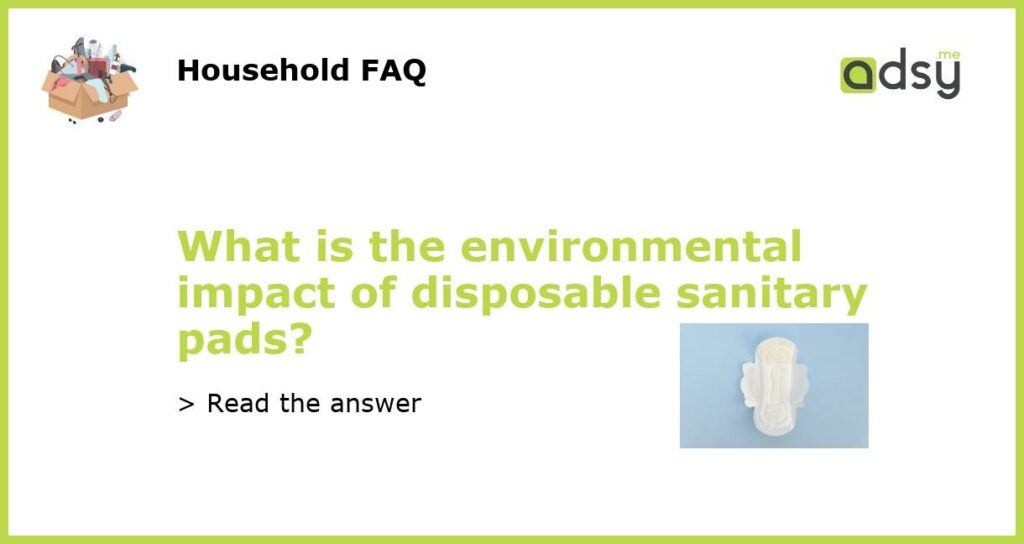The Environmental Impact of Disposable Sanitary Pads
Disposable sanitary pads have become a popular choice among women due to their convenience and ease of use. However, these products have a significant environmental impact that is often overlooked. From the manufacturing process to the disposal of used pads, the production and use of disposable sanitary pads contribute to pollution and waste. This article will explore the environmental impact of disposable sanitary pads and discuss more sustainable alternatives.
The Manufacturing Process
The production of disposable sanitary pads involves the use of materials that have a detrimental effect on the environment. The main components of a typical pad include plastic, wood pulp, and synthetic fibers. The manufacturing process requires the extraction and processing of these materials, which often involves the use of chemicals and energy.
The production of plastics, such as the polyethylene backing found in many pads, contributes to greenhouse gas emissions. Additionally, the extraction of wood pulp, usually sourced from deforestation, impacts biodiversity and contributes to climate change. The use of synthetic fibers, such as rayon or polyester, also requires the extraction of raw materials and energy-intensive production processes.
Waste Generation
Disposable sanitary pads contribute to a significant amount of waste that ends up in landfills. According to a study by the SusTainable Sanitation and Water Management (Sandhi) Consortium, a woman will generate around 125 kilograms of sanitary waste in her lifetime, primarily composed of disposable pads.
These pads take hundreds of years to decompose, releasing harmful chemicals into the environment as they break down. The plastic components of the pads, such as the polyethylene backing, contribute to marine pollution, polluting waterways and harming marine life. The waste generated by disposable sanitary pads poses a long-term threat to the environment, as it continues to accumulate in landfills and oceans.
Water Consumption and Chemicals
The production of disposable sanitary pads also involves high water consumption and the use of chemicals. The production of pulp requires large amounts of water, which contributes to water scarcity in areas where it is sourced. The use of chemicals, such as chlorine bleach, is common in the manufacturing process to ensure the pads are white and absorbent.
These chemicals can have negative health effects on workers in the manufacturing plants and contribute to water pollution when discharged into waterways. In addition, the use of fragrances and dyes in pads can lead to skin irritation and allergic reactions in some individuals.
Sustainable Alternatives
As awareness of the environmental impact of disposable sanitary pads grows, more sustainable alternatives are emerging. One option is the use of reusable cloth pads. These are made of natural fibers such as cotton and can be washed and reused multiple times. While the initial cost may be higher than disposable pads, the long-term savings and reduced environmental impact make them a viable option.
Another alternative is menstrual cups, which are made of medical-grade silicone and can be reused for several years. Menstrual cups are inserted into the vagina to collect menstrual blood and can be emptied, washed, and reused. They are hygienic, convenient, and significantly reduce waste compared to disposable pads.
Finally, organic disposable pads made from biodegradable materials are also available. These pads are made from organic cotton or bamboo fibers and are free of chemicals and plastics. While they still generate waste, their biodegradable nature means that they pose a lesser threat to the environment compared to traditional disposable pads.
In conclusion, the environmental impact of disposable sanitary pads is significant. From the manufacturing process to waste generation and water consumption, these products contribute to pollution and waste. As consumers become more conscious of their environmental footprint, there is an increasing demand for sustainable alternatives such as reusable cloth pads, menstrual cups, and organic disposable pads. By choosing these options, women can reduce their environmental impact and contribute to a more sustainable future.






